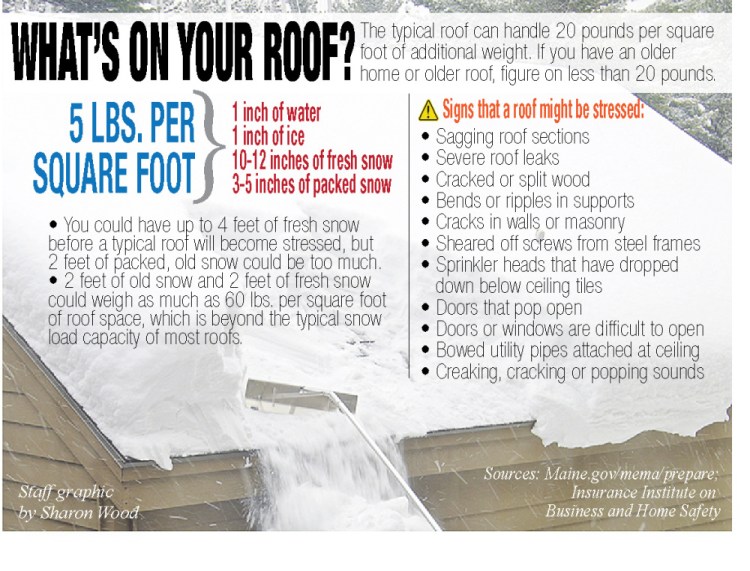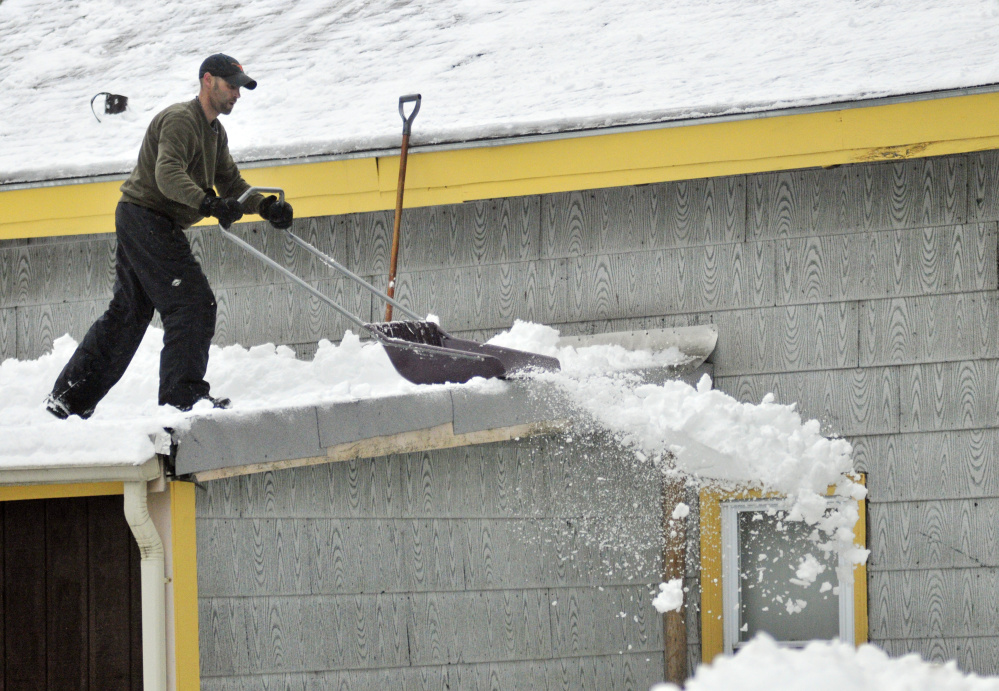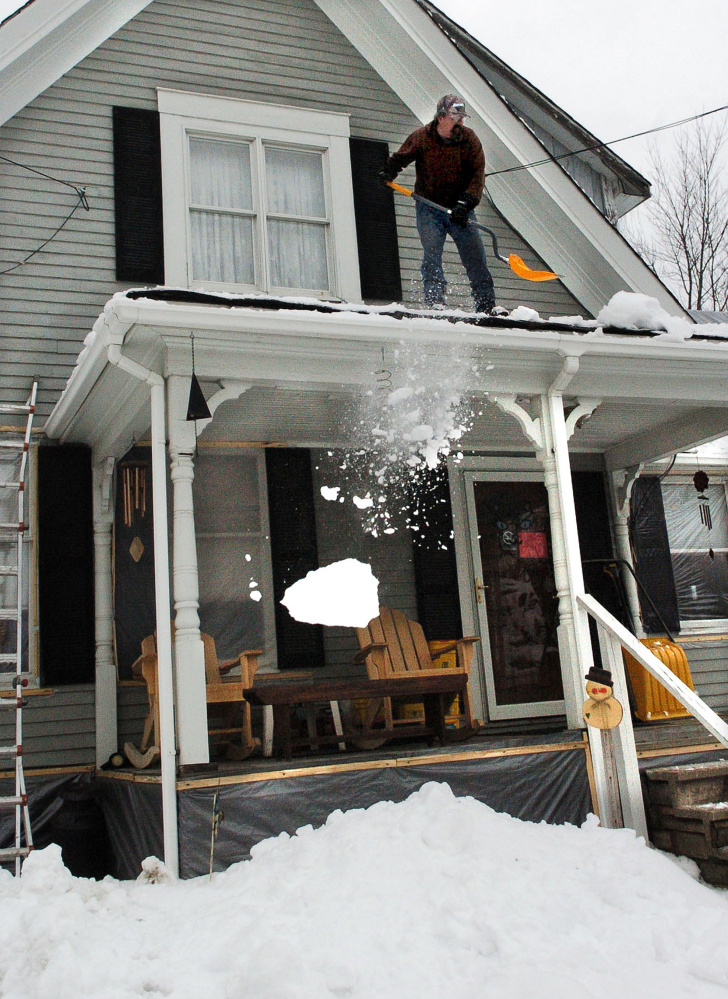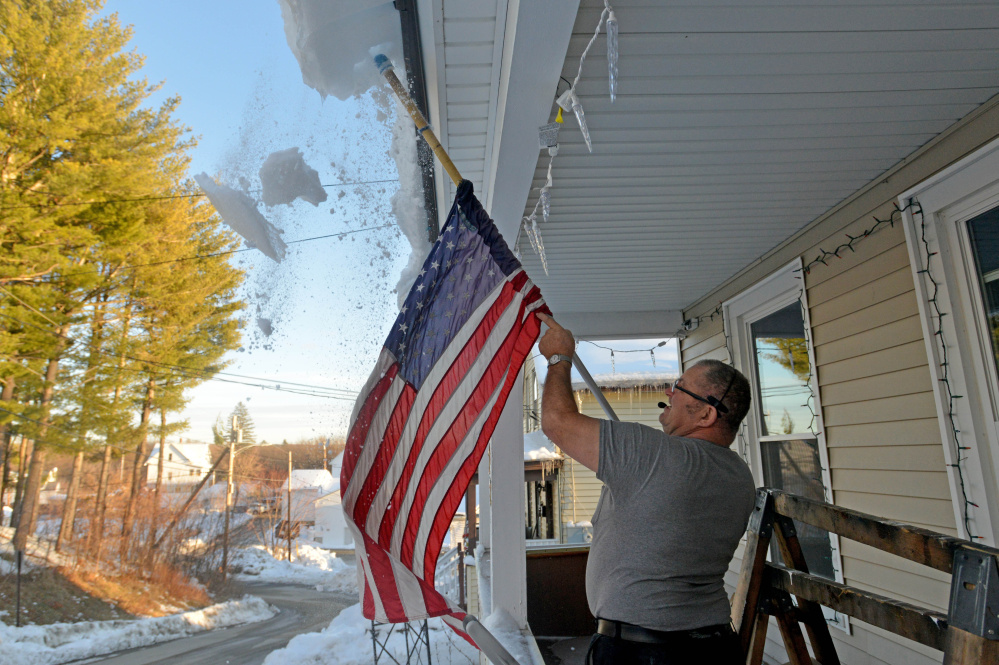AUGUSTA — State officials and meteorologists are warning Mainers of the potential dangers of heavy snow buildup on roofs in central and northern Maine.
Most of Maine already has had considerably more snow this winter than at the same time last winter, so officials are making sure people are aware of the hazards caused by having too much snow on top of homes or buildings.
“For the most part, Mainers are pretty good about it,” said Susan Faloon, public information officer for the Maine Emergency Management Agency. “But this warning always bears reminding.”
Donald Dumont, a meteorologist from the National Weather Service in Caribou, said the agency estimates that most roofs in northern and central Maine have 60 percent to 90 percent of the total weight they are designed to handle. “On average, this would happen more toward the end of February,” he said.
Dumont said the amount of snow varies from roof to roof, but if a structure is in a wind-protected area, it’s a good assumption that is has that much snow.
“It’s definitely a lot for this early in the year, but it’s not unheard of for us to have this much water weight in this much snow,” he said.
Mark Blais has been removing snow from roofs, decks, driveways and roads in the Augusta area for more than 30 years. He posted an advertisement in the Kennebec Journal for his service about a week ago and already has done nearly 10 roofs and decks.
“This is way earlier than last year, and it’s been much busier than expected,” Blais said. “People are definitely concerned.”
Blais said most people don’t start becoming concerned until they start seeing leaks from their roof, but the best thing to look for is ice buildup, because that’s when problems start happening.
People sometimes can be misled when reading snowfall amounts, Dumont said, because not all snow weighs the same. A foot of snow might weigh less than 6 inches of snow, depending on how much ice and water the snow contained.
“You can’t just look at how much snow is on the ground, so it’s all about awareness,” Dumont said. “And rain is bad, because if you already have snow on your roof, the rain absorbs (it) and then the snow freezes again.”
Faloon said it’s important that people start clearing some of the snow off their roofs now to prevent an even bigger buildup as the season progresses. Thinking ahead to the next storm, she said, is always a good idea.
She said calling a professional is the safest option, and people without experience shouldn’t climb a ladder or climb onto a roof. The emergency management agency has snow removal information and tips at Maineprepares.com.
The Insurance Institute on Business and Home Safety estimates the typical roof can handle 20 pounds per square foot of additional weight. If the roof is older or has had problems in the past, however, less than 20 pounds is a better guess.
For pitched roofs, MEMA recommends using a snow rake, which is available at most hardware stores, though Dumont said they are sold out in northern Maine. Large icicles should be removed carefully because not only are they sometimes heavy, but they are usually sharp.
Faloon also warned against using an electric heating device such as a blowtorch or another open flame source to melt snow off the roof. Not only could it cause your roof to catch fire, but melting snow and ice makes water, and water and electricity don’t mix.
MEMA also urges people not to climb ladders, because ice and snow tend to build up on rungs and on the soles of boots.
Some of the signs that a roof might be stressed include sagging roof sections, severe leaks, bends or ripples in supports, cracks in walls or masonry or doors and windows that are difficult to open. MEMA says that if any of those signs are present, the building should be evacuated immediately.
Jason Pafundi — 621-5663
Twitter: @jasonpafundiKJ
Send questions/comments to the editors.







Comments are no longer available on this story